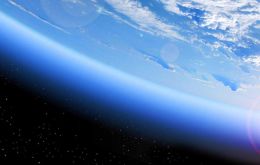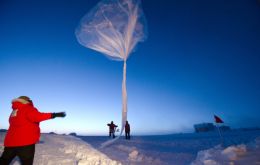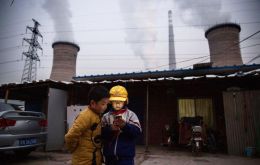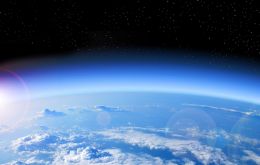MercoPress. South Atlantic News Agency
Tag: Ozone layer
-
Monday, October 9th 2023 - 09:55 UTC
Copernicus satellite detected giant hole in ozone layer over Antarctica, three times the size of Brazil

The European Space agency Copernicus Sentinel satellite detected a giant hole in the ozone layer over Antarctica, as part of the EU's Environmental monitoring program. The hole which scientists call an “ozone depleted area” was 26 million square kilometers in size, roughly three times the size of Brazil.
-
Thursday, September 16th 2021 - 09:15 UTC
International Day for Protection of the Ozone Layer, 16 September

The ozone layer, a fragile shield of gas, protects the Earth from the harmful portion of the rays of the sun, thus helping preserve life on the planet. The phase-out of controlled uses of ozone-depleting substances and the related reductions have not only helped protect the ozone layer for this and future generations but have also contributed significantly to global efforts to address climate change; furthermore, it has protected human health and ecosystems by limiting the harmful ultraviolet radiation from reaching the Earth.
-
Friday, February 12th 2021 - 09:35 UTC
China doing its homework and ozone layer recovery back on track

In recent years, scientists had been alarmed by a sudden unexplained rise in ozone attacking chemicals in the atmosphere. Higher levels of trichlorofluoromethane, also known as CFC-11, were showing up in air samples — despite being officially banned worldwide since 2010.
-
Wednesday, November 7th 2018 - 08:34 UTC
Ozone layer recovering, says the latest UN report: new threat from East Asia

The earth's protective ozone layer is finally healing from damage caused by aerosol sprays and coolants, a new United Nations report said. The ozone layer had been thinning since the late 1970s. Scientist raised the alarm and ozone-depleting chemicals were phased out worldwide.
-
Monday, July 9th 2018 - 08:31 UTC
Chinese home insulation blamed for gas emissions damaging the ozone layer

Cut-price Chinese home insulation is being blamed for a massive rise in emissions of a gas, highly damaging to the Earth's protective ozone layer. The Environmental Investigations Agency (EIA) found widespread use of CFC-11 in China, even though the chemical was fully banned back in 2010.
-
Thursday, May 17th 2018 - 08:31 UTC
Someone is cheating with ozone warn scientists: rate of decline has fallen drastically

The decline in the atmosphere of an ozone-depleting chemical banned by the Montreal Protocol has recently slowed by half, suggesting a serious violation of the 196-nation treaty, researchers revealed Wednesday.
